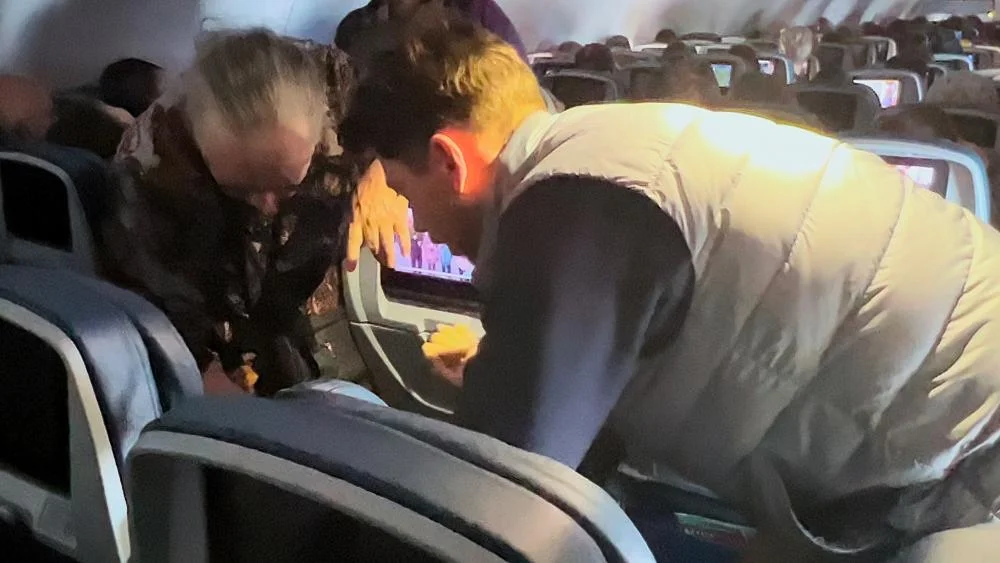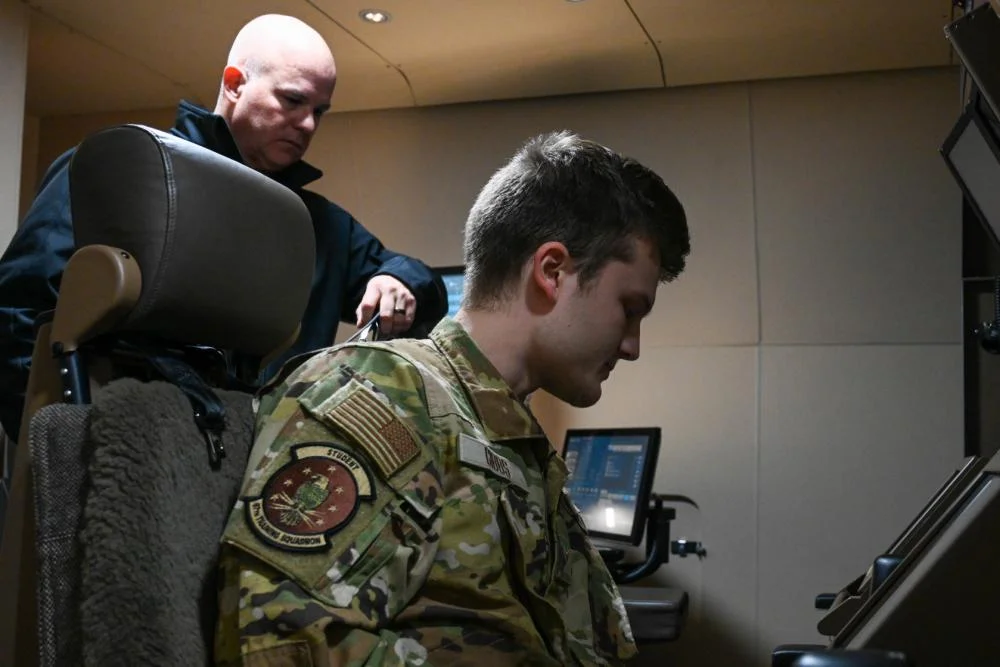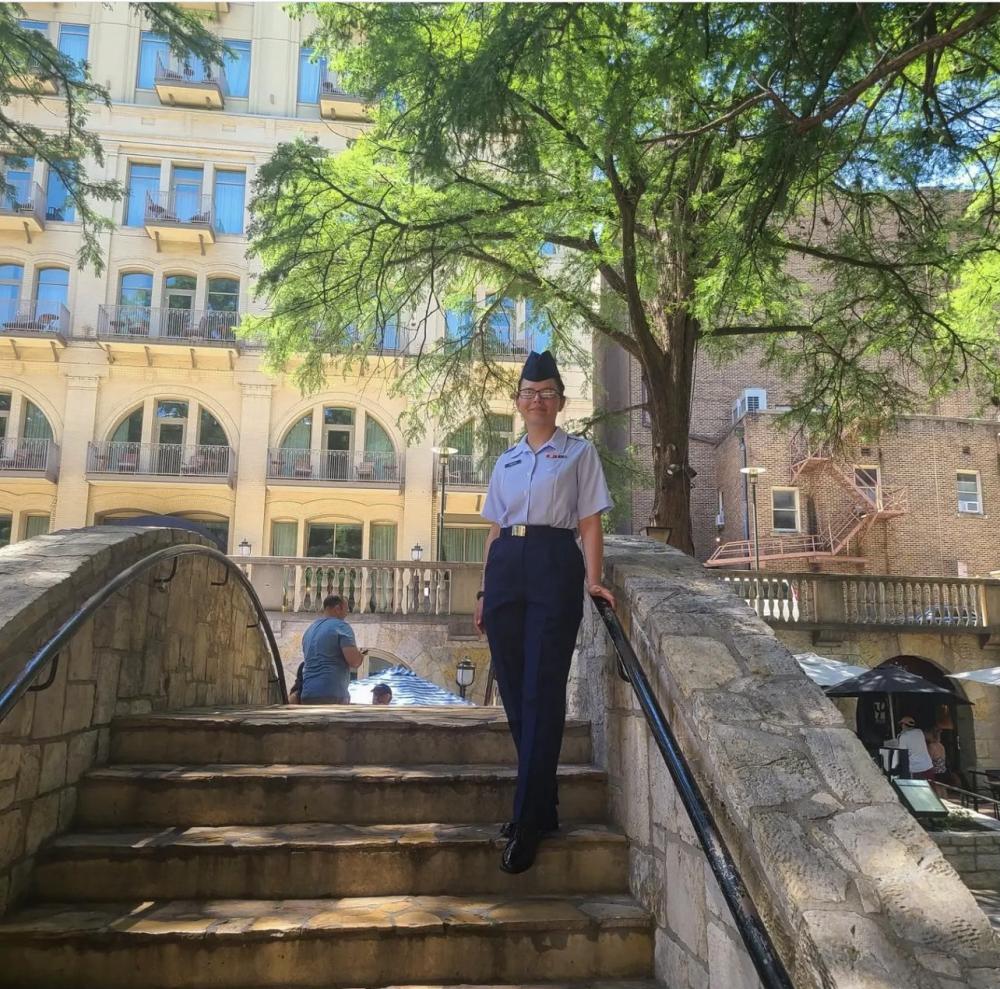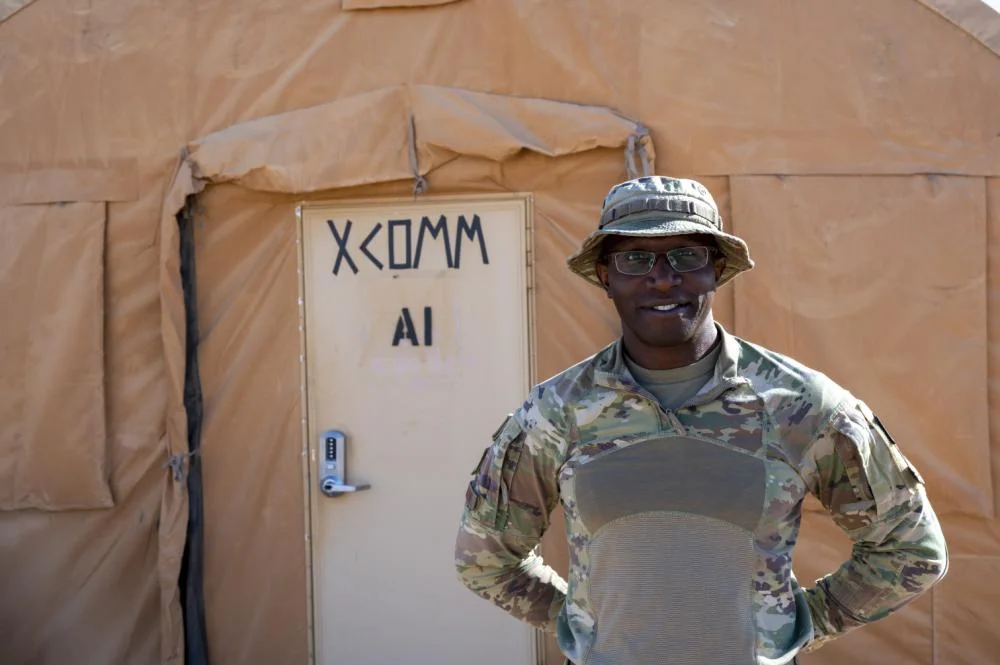AIR BASE 201, Niger – “There was this firework [in Nigeria] called a knockout-banger,” said Master Sgt. Voke Uwedjojevwe, 724th Expeditionary Communications Flight, network operations chief. “It’s like a four-inch long straw, but on one side it’s like a match. You don’t have to use anything to light it – just scratch it on a matchbook – like a match. The opposite end has a plastic cap, so we’d take the cap off and combine the gunpowder from two of them. The bigger, the louder, the better.”
Uwedjojevwe was born at the University of Michigan Hospital in Ann Arbor. His parents had emigrated from Nigeria in the 1960’s. His father started out in medicine as a nurse and then went to school in the United States to become a doctor, which was why he was born in a teaching hospital. His mother, a teacher, also studied nursing. When he was 10 years old, his parents moved back to Nigeria to give their medical expertise back to the country. Along with his family, his father brought 20 beds, a variety of medical equipment, and the family set up a hospital.
Uwedjojevwe said everything was an adventure when first moving to Nigeria as a kid. “You are trying to absorb everything different you come into contact with; however, after a while it starts to become a hardship – a culture shock,” said Uwedjojevwe. “If there was a water shortage, you would have to fetch water with a bucket or a jerry can.”
One of the big adjustments to living in Nigeria were the schools. “All the schools there are run by the government and there were a lot of shortages at that time,” said Uwedjojevwe. “A lot of classes didn’t have teachers and science labs didn’t have supplies. Your schedule for the day might include History, Economics, English and Mathematics, but you might be lucky to have two or three teachers that day.”
The value of education, instilled by his father, kept him from being a “noisemaker,” which was what he said the kids were called who, instead of doing their schoolwork when there wasn’t a teacher for that class, would be out of their seats talking and causing trouble.
“I was always kind of ‘geeky’ so I would sit at my desk and try to read my books instead of being a noisemaker,” Uwedjojevwe said with a laugh. “Plus the teachers had a right to corporal punishment.”
This American-Nigerian “geek” moved back to the U.S. 10 years later, at the age of 20, and one of the first things he did was get fast food with a soda – his mom always made him drink milk – then he got a job.
“Things were quite different when I moved back – my parents weren’t doing everything for me anymore,” said Uwedjojevwe.
The lessons he learned from living in both countries served him well, especially the lesson of not taking anything for granted, such as not having a consistent water system or a reliable electric grid and having to study by candlelight or a kerosene lantern.
“Living in both countries made me more grateful for the opportunities we have in the U.S., especially the opportunities we have in the military,” said Uwedjojevwe. “I said to myself, if I can get into the military I can have experience on my resume. I can apply some of the training I receive to a job when I get out. I wanted a place where I could get job experience and further my education.”
Talking to people at his civilian job is what led him to joining the Air Force. He worked with people who had served in the Army, Navy and Marines. The only branch he wasn’t able to speak to someone about was the Air Force.
“All of the guys who had served in other branches strongly suggested joining the Air Force,” said Uwedjojevwe, smiling. “And that is exactly what I did.”
He said living in Nigeria prepared him for joining the Air Force because part of the Nigerian culture is not talking back to people and learning to take instruction reasonably well.
“If I had just grown up in the U.S., I might not have that mindset to be more attentive to instructions, especially to people who are over you, supervisor wise,” said Uwedjojevwe.
His mindset also shaped him in the way he supervises his Airmen. He encourages Airmen to ask questions, to have thoughtful conversations and inquisitiveness, but he also expects Airmen to adopt a “can do” attitude. He said some people, reflexively, want to have a clash of wills, not wanting to take the time to understand what you are teaching them.
When speaking with Uwedjojevwe one can sense how these experiences, the importance of helping others, the value of education (he has acquired two bachelor’s degrees and two master’s degrees), and giving back, has shaped him as a person, an Airman and a senior noncommissioned officer. He leads by example, doing simple things like keeping his work area clean, which has a great impact on Airmen. Becoming a knockout-banger of a supervisor – creating bigger, louder and better Airmen.
U.S. Airmen – Giants of Africa
This is the first of a three-part series from AB 201 of the experiences of U.S. Airmen serving in Niger who spent time living in Nigeria. Nigeria is often referred to as the “Giant of Africa”.


![DVIDS – Images – Alright stop, collaborate and listen [Image 4 of 4] DVIDS – Images – Alright stop, collaborate and listen [Image 4 of 4]](https://101veterans.com/wp-content/uploads/2022/12/1670016017_1000w_q75.jpg)

 Private Internet Access gives you unparalleled access to thousands
of next-gen servers in over 83 countries and each US state. Your
VPN experience will always be fast, smooth, and reliable.
Private Internet Access gives you unparalleled access to thousands
of next-gen servers in over 83 countries and each US state. Your
VPN experience will always be fast, smooth, and reliable.![DVIDS – Images – Service members prepare for exercise Yama Sakura 83 [Image 3 of 3] DVIDS – Images – Service members prepare for exercise Yama Sakura 83 [Image 3 of 3]](https://101veterans.com/wp-content/uploads/2022/12/1669972726_1000w_q75.jpg.webp)

![DVIDS – Images – 909th ARS refuels Eagles, Raptors [Image 9 of 9] DVIDS – Images – 909th ARS refuels Eagles, Raptors [Image 9 of 9]](https://101veterans.com/wp-content/uploads/2022/12/1669886228_1000w_q75.jpg.webp)



![DVIDS – Images – A Republic of Korea Air Force C-130H Hercules arrives at Andersen AFB [Image 10 of 10] DVIDS – Images – A Republic of Korea Air Force C-130H Hercules arrives at Andersen AFB [Image 10 of 10]](https://101veterans.com/wp-content/uploads/2022/11/1669799687_1000w_q75.jpg.webp)



